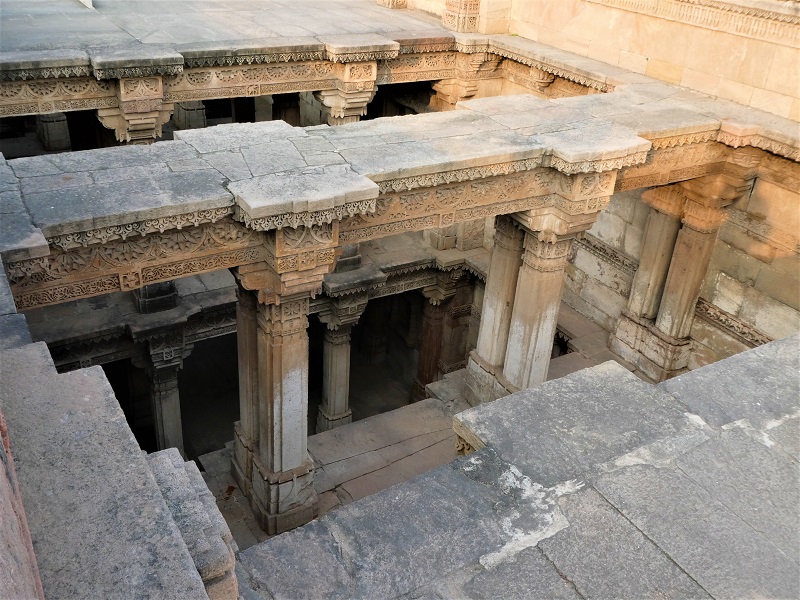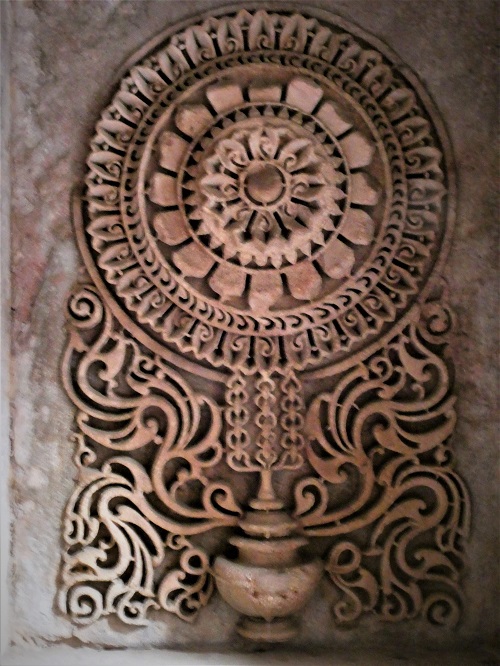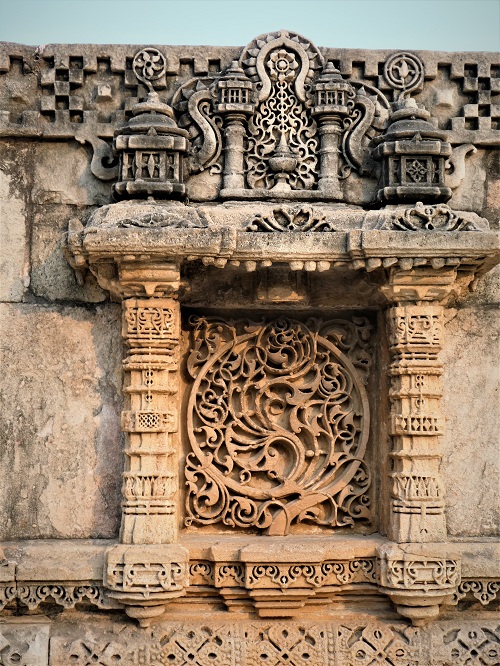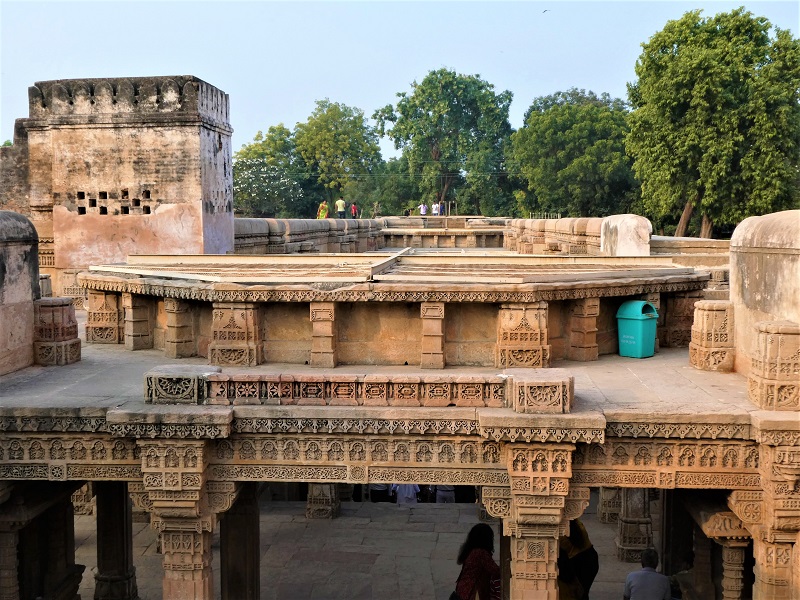The Ranns, deserts, artisan villages, stepwells of Gujarat, and now to Ahmedabad; Eastern Gujarat… in 9 stories… this is ‘story 7’


Co-authored & edited by my travel companion – Shoba Nayar

(Click on the photo’s to enlarge for better views)
Ahmedabad: Beginning to explore Eastern Gujarat

Farewell to Bhuj and the Great Rann of Kutch
We thanked and farewelled Ajay our guide and settled into packing for the long drive the next day back to Ahmedabad. The day dawned crisp and cool and we set off anticipating the next leg of our wonderful journey. Along this return journey we reminisced on the few days since we had travelled this road and the vast experiences we had enjoyed in such a short time. We again encountered caravans of migrant nomads with camels and goats walking along the roads or camped in the local off road areas.

Uncovering deep history within the city of Ahmedabad

In Ahmedabad, we went to the Sarkhej Roza—the ‘Acropolis of Ahmedabad’—and met Hardik, our new guide for the remainder of the journey. Here, he guided us around this museum of past princes and kings, queens and court.

The history, architecture, and the culture fascinated us. Prior to the Mughal period, the early Islamic architecture influenced the building of Sarkhej Roza with the fusion of Islamic and Persian, along with indigenous Hindu and Jain, features.
Sarkhej was a village of predominantly Hindu weavers and indigo-dyers. A Sufi saint, Shaikh Ahmed Khattu Ganj Baksh, who was the friend and advisor of the Sultan Ahmed Shah, lived in the quiet village away from the bustling city. Greatly revered during his lifetime of 111 years, he is said to have had miraculous powers and died in 1445 just 5 years after his friend the Sultan.

The reigning monarch, Mohammed Shah, had a mausoleum and mosque built in his honour and this was completed in 1451. Further constructions of a small mosque, central pond and pavilions occurred over the following 50 years and the whole area became a place of quiet ‘repose’, meditation, and summer house for the royal family.


To add to the grandeur and beauty, a garden was constructed between the mausoleum built for the ruling Shah and his family, and the tomb of the Sufi Saint.
Adalaj Stepwell

We had fallen in love with stepwells and from here we drove to the Adalaj stepwell constructed in the late 15th century (1499) by Queen Rudabas. The story behind its conception and building is quite interesting. After the Muslim ruler who overtook the land killed her husband, he offered to marry this beautiful queen. She said yes but only on the condition that he build the stepwell that her late husband, the King, was going to build. He agreed; however, it took some years to build in the Indo-Islamic archetecture style of the time. Once completed, he said, ‘okay, so now you will marry me’ and she said ‘no’ and drowned herself in the well.





When we heard this story, we gasped with the tragedy of the moment as we stared down into the area of the well. The Muslim ruler then asked the architects if they would build another one nearer to Ahmedabad and they said yes, to which he killed them all so that no more like this could ever be built again. These architects are buried beside the stepwell and their graves are there for all to see.











Gandhi’s Ashram: his main home and museum


A trip to Ahmedabad would not be complete without a visit to the Gandhi Ashram. This beautiful place exudes peace as the river quietly meanders by. The Subramati River is wide and full but gives one a feeling of relaxation and stillness, yet the ‘movement of time’ as it makes its way to the Persian Gulf.

Gandhi’s Haven by the River
This is where Mahatma Ghandi lived and worked for much of his time and where the famous ‘Salt March’ began in March 1930. The Salt March was a peaceful protest against the British rule over India. The museum beside the home where Gandhi and his wife and family lived is a testament to the life of this most famous man, where photos, writings, and a history of his work are on display, at times overwhelming the senses with the extensive collection of memorabilia.



Story 8..’Eastern Gujarat part 1′ coming soon.
Travel organised with Suresh Bahuguna at Lotus India Journeys!
http://lotusindiajourneys.com/index.php
#travel, #traveltheworld, #worldtraveller, #worldtraveler, #India, #lettheadventurebegin, #Gujarat, #ahmedabad, #gujarattourism, #instagram_ahmedabad, #storiesofindia, #exploregujarat, #exploringgujarat, #ourahmedabad,#travelrealindiaकेमं, #gujarat_diaries,#ahmedabaddiaries, #unescoworldheritage, #indiapictures, #indianphotography, #photographers_of_india, #beautifuldestinations, #throughmyeyes, #exploreindia, #traveldiaries, #gandhiashram, #gandhiji, #mahatmagandhi, #indianaturally


Very well written, loved the photos.
I knew about these stairs but wasn’t aware of the story. Great Credit and admiration goes to those architects 🙏
Thankyou Sharmaine, these places have special significance in history, the silk and spice routes and in personal connections in those days. They served a great purpose to the travellers and their animal companions and we really fell in love with them while on this journey. once again thankyou for your reply. Teresa
Thanks Sharmaine… Your comments heloed me to re-read the article attentively on its due merit 🙏
Exquisite, picturesque depiction of great ancient architectural marvels. Very insightful and indepth facts on planet’s glorious eventful past. Opting to painful options oo finding pride on honarary death than sharing a bed with clumsy wicked king, by distinguished queens.
Thank you Mahesh.. I love the ‘clumsy wicked king’ part… glad you enjoyed again!!